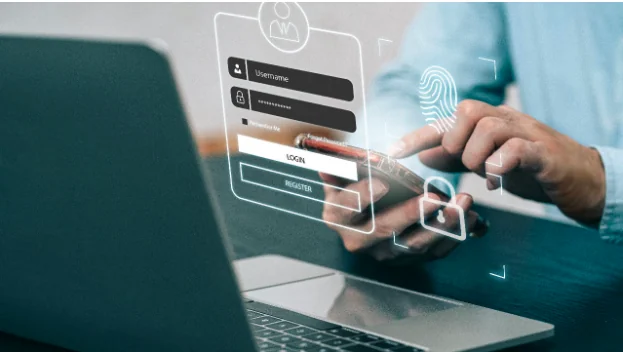In an increasingly digital world, security is a top priority for businesses and users. One-time passwords (OTPs) have become essential for user authentication, adding a crucial layer of security. This article breaks down the workings of OTP APIs, their role in software development, and why they are vital for secure applications.
We will also look at modern solutions like Arkesel, which provide enhanced security features.
The role of APIs in OTP delivery
Application programming interfaces (APIs) enable the integration of OTP functions into applications, facilitating communication with OTP servers. APIs simplify OTP generation and verification, making it easy for developers to create secure, user-friendly experiences without complex manual coding. This means developers can focus on enhancing user experiences while ensuring security.
Functions of OTP APIs
The functions of OTP API are:
- OTP generation creates a unique, one-time password (OTP) for each session or transaction. Each OTP is different and is generated securely, so it can’t be guessed or reused.
- OTP delivery: Once the OTP is created, it needs to be sent to the user. This can be done through various methods, such as SMS (text message), email, or special apps that generate OTPs (like Google Authenticator). The goal is to ensure the user gets the OTP easily and quickly.
- OTP verification: After the user receives the OTP, they enter it into the application. The system then checks if the OTP is valid (matches the generated one) and is still within the allowed time frame (has not expired). If everything checks out, the user gets access; if not, they are asked to try again.
Benefits of using OTP APIs in development
The benefits of using OTP APIs in software development are:
1. Enhanced security: OTPs safeguard user accounts even if passwords are compromised, protecting sensitive data and ensuring compliance with security standards.
2. User convenience: It simplifies the login process, allowing users to authenticate quickly without complex passwords and improving user satisfaction.
3. Scalability: It handles multiple requests efficiently, making OTP APIs suitable for applications with fluctuating user numbers.
4. Cost-efficiency: It is more affordable than traditional authentication systems, with scalable pricing options from providers like Arkesel.
Technical aspects of OTP APIs
The technicalities of OTP (One-Time Password) APIs include the following:
1. OTP generation methods:
- Time-based One-Time Password (TOTP) generation: It is generated using the current time and a shared key, ensuring a unique password each time.
- HMAC-based One-Time Password (HOTP) generation: This uses a counter that increments each OTP request and is suitable for scenarios where multiple OTPs are needed.
2. OTP delivery mechanisms:
OTPs can go through various methods, each with its distinct advantages and potential vulnerabilities:
- SMS: It is widely used but susceptible to interception. Encryption and security measures help mitigate risks.
- Email: The email is standard but can be slower and more vulnerable to phishing. Users should be educated on securing their accounts.
- Authentication apps: Apps like Google Authenticator offer a safer, offline option but require user management.
3. Verification process:
The verification process typically involves several steps:
- The user receives an OTP using their selected method.
- The user inputs the OTP into the application.
- The application sends the OTP to the API for validation.
- The API checks the OTP’s validity. If correct, access is granted; if not, an error message appears.
4. Security considerations:
Implementing OTPs requires attention to several security factors:
- Expiration: OTPs should have a short lifespan to minimize the risk of interception.
- Rate limiting: It includes limiting the number of OTP requests from a single user, which can help prevent abuse.
- Logging and monitoring: This involves keeping detailed logs of OTP requests, which helps identify patterns that may indicate fraudulent activity.
Integrating OTP APIs: A developer’s perspective
Integrating OTP APIs involves a structured approach to ensure secure and seamless user authentication, balancing technical requirements and user experience.
Step 1: Define your requirements
Start by outlining your needs before integrating an OTP API:
- Identify the type of authentication required.
- Choose the delivery method best suited for your users.
- Plan how to maintain a seamless user experience throughout.
Step 2: Choose the right API
- Select an API based on your needs, focusing on ease of integration, cost, and security features. Arkesel offers straightforward integration with detailed documentation.
Step 3: Implement the API
- Backend: Set up secure endpoints for OTP generation and verification, using best practices to avoid vulnerabilities.
- Frontend: Create an intuitive interface with clear instructions.
Step 4: Test thoroughly
- Conduct unit, integration, and user acceptance tests. Address scenarios such as expired OTPs or incorrect entries.
Step 5: Monitor and optimize
- Post-launch, track user interactions and implement improvements based on feedback.
Best security practices when implementing OTP APIs
Implementing OTPs effectively involves adhering to best practices that maintain the security and integrity of the authentication process. Here are some key recommendations:
- Use secure channels: Always send OTPs over secure channels like HTTPS to prevent interception during transmission. This adds a layer of security to protect user data.
- Limit OTP attempts: Restrict the number of attempts a user has to enter the OTP. This measure helps mitigate the risk of brute-force attacks, where an attacker tries multiple combinations to guess the correct OTP.
- Implement expiration: Ensure that OTPs have a short validity period. By setting an expiration time, you reduce the window of opportunity for attackers to use a stolen OTP.
- Monitor for unusual activity: Track OTP requests and user behavior to identify potential security threats. Implementing monitoring and alerting mechanisms can help you respond quickly to suspicious activities.
- Educate users: Inform users about the importance of OTPs and how to protect their authentication processes. Encourage them to use secure devices and to be cautious about sharing OTPs or personal information. By following these best practices and utilizing Arkesel’s OTP API, developers can enhance their applications’ security while providing a safe and user-friendly.
The critical importance of OTP APIs in software security
Understanding OTP generation, delivery, and verification helps developers build secure applications. Using tools like Arkesel enhances security, builds user trust, and protects sensitive data. Integrating OTP APIs into your application is essential in today’s digital environment.
By following best practices and leveraging these tools, you can ensure safer, more reliable digital experiences and maintain user confidence. Prioritizing OTPs as a core part of your security strategy strengthens data protection and mitigates the risk of unauthorized access.





